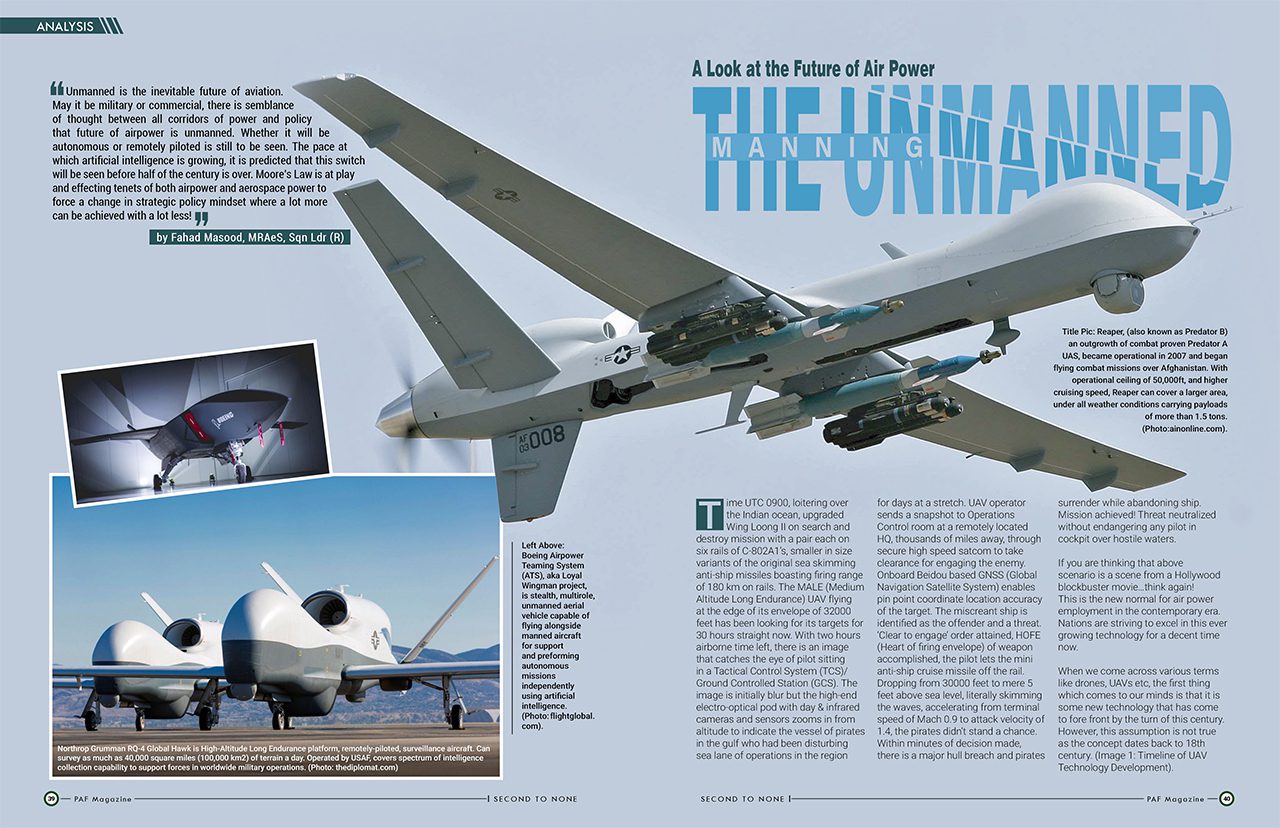Unmanned is the inevitable future of aviation. May it be military or commercial, there is semblance of thought between all corridors of power and policy that future of airpower is unmanned. Whether it will be autonomous or remotely piloted is still to be seen. The pace at which artificial intelligence is growing, it is predicted that this switch will be seen before half of the century is over. Moore’s Law is at play and effecting tenets of both airpower and aerospace power to force a change in strategic policy mindset where a lot more can be achieved with a lot less!
Time UTC 0900, loitering over the Indian ocean, upgraded Wing Loong II on search and destroy mission with a pair each on six rails of C-802A1’s, smaller in size variants of the original sea skimming anti-ship missiles boasting firing range of 180 km on rails. The MALE (Medium Altitude Long Endurance) UAV flying at the edge of its envelope of 32000 feet has been looking for its targets for 30 hours straight now. With two hours airborne time left, there is an image that catches the eye of pilot sitting in a Tactical Control System (TCS)/Ground Controlled Station (GCS). The image is initially blur but the high-end electro-optical pod with day & infrared cameras and sensors zooms in from altitude to indicate the vessel of pirates in the gulf who had been disturbing sea lane of operations in the region for days at a stretch. UAV operator sends a snapshot to Operations Control room at a remotely located HQ, thousands of miles away, through secure high speed satcom to take clearance for engaging the enemy. Onboard Beidou based GNSS (Global Navigation Satellite System) enables pin point coordinate location accuracy of the target. The miscreant ship is identified as the offender and a threat. ‘Clear to engage’ order attained, HOFE (Heart of firing envelope) of weapon accomplished, the pilot lets the mini anti-ship cruise missile off the rail. Dropping from 30000 feet to mere 5 feet above sea level, literally skimming the waves, accelerating from terminal speed of Mach 0.9 to attack velocity of 1.4, the pirates didn’t stand a chance. Within minutes of decision made, there is a major hull breach and pirates surrender while abandoning ship. Mission achieved! Threat neutralized without endangering any pilot in cockpit over hostile waters.
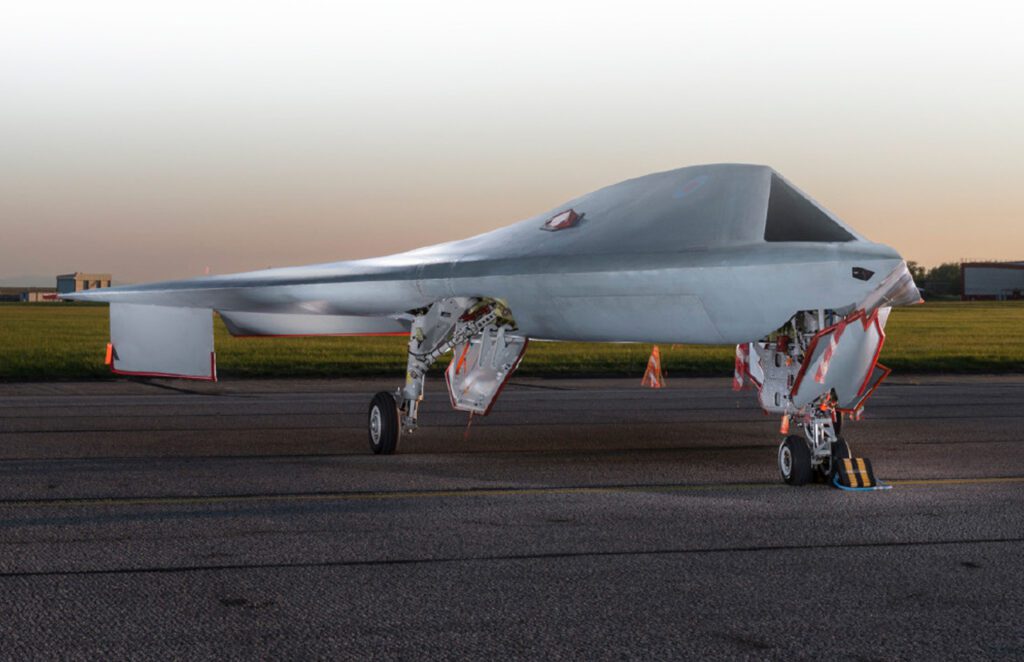
If you are thinking that above scenario is a scene from a Hollywood blockbuster movie…think again! This is the new normal for air power employment in the contemporary era. Nations are striving to excel in this ever growing technology for a decent time now.
When we come across various terms like drones, UAVs etc, the first thing which comes to our minds is that it is some new technology that has come to fore front by the turn of this century. However, this assumption is not true as the concept dates back to 18th century. (Image 1: Timeline of UAV Technology Development).
War of Semantics
War of semantics regarding various ‘unmanned’ terms have raged over the previous couple of decades. It is pertinent to clarify some misconceptions regarding various expressions in vogue, mentioned in following paragraphs.
Drone
Searching for the word “drone” in a dictionary and amongst several alternative entries (including an indolent person, a deep humming sound and a monotonous tone of speech) it is found that…
It is a male bee in a bee colony, which does no work but can fertilize the queen It is a pilotless aircraft directed by remote control.
An amazing contrast of idea in between the two. Where the first is a one-time-use existence other than a solitary function. On the other hand, the second plays a pivotal role in air power employment and pivots the whole war in victor’s favor just like the Azerbaijan-Armenia conflict in the recent past.
UAV or RPV or UAS?!
It is not as simple as one-two-three but an attention-grabbing schmooze of explication has materialized in academia and industry alike, for some time now on the many types of ‘aircraft’. (Image 3)
As seen with reference to Image 2, there is a lot more to it that meets the eye. And it needs a keen eye and lots of deliberation required to identify what is what. But contemporarily speaking, UAV and RPV are synonymously used and UCAS with UCAV have similar context. To make some semblance of relationship between a few terms used to describe drones, terms in italics are no longer recognized by ICAO.(Image 3)
Components of UAS
An Unmanned Aerial System (UAS) has three components…
Autonomous or human operated control system usually on ground or a ship but may be on another airborne platform Unmanned Aerial Vehicle (UAV)
Command & Control (C2) system – sometimes referred to as a communication, command and control (C3) system – to link the earlier two.
UAS can also include an autonomously controlled UAV or, more likely, a semi-autonomous UAV. In recent years, tendency to refer to any UAV as a Drone has developed but the term is not universally considered appropriate. UAVs can vary in size from those which can be hand launched to purpose built or adapted vehicles size of conventional fixed or rotary wing aircraft.
The Big Three!
From data it is currently known that there are at least 150 different military drone systems being used by 48 countries. Drones range in size from hummingbird size Black Hornet mini-copter to the massive 15,000-pound RQ-4 Global Hawk. However, the big three players in the production and use of drone technology would remain USA, China and Israel.
In 2001 United States became first country to use a true armed drone in combat. Now there are at least 28 countries with armed drones in their military, and it is known that at least nine (USA, Israel, UK, Pakistan, Iraq, Nigeria, Iran, Turkey, and Azerbaijan) have actually used them in operations. Six of those countries only first used an armed drone in previous few years.
UAVs in USA
USA is by far the largest researcher, producer, and user of military drones. Teal Group projects that the United States will account for 77% of total military worldwide research, development, test & evaluation (RDT&E) spending on UAVs in coming decade and just over half of all military procurement.
2019 military budget request called for $2.4 billion to be spent on research, upgrades, and procurement of unmanned aerial systems. Single biggest item is $1.2 billion for MQ-9 Reaper, which is primary offensive strike drone for US military.
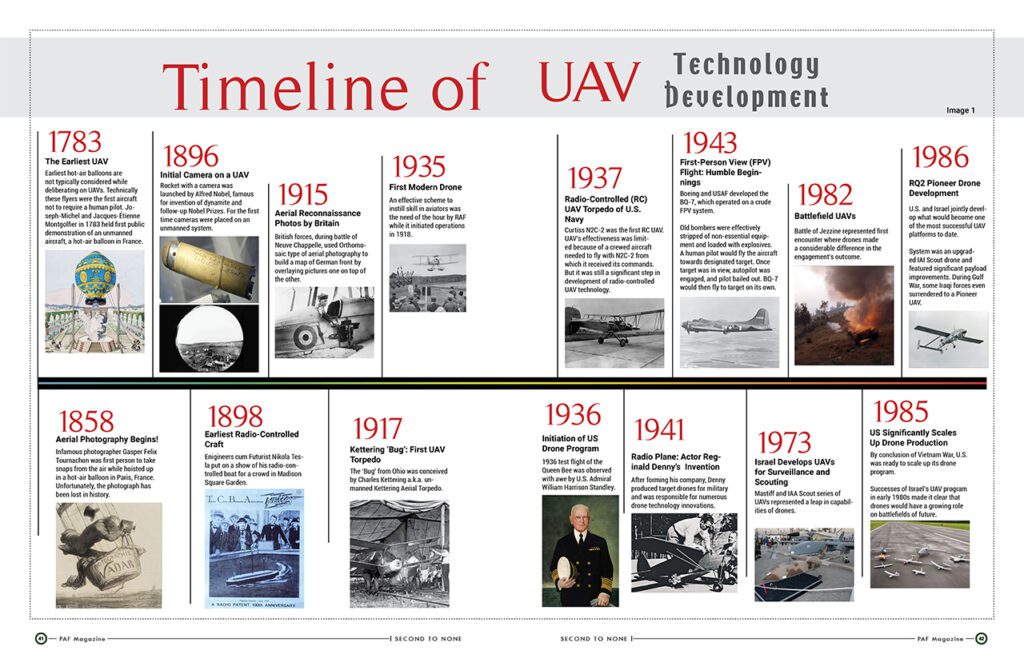
MQ-9 Reaper is built by General Atomics Aeronautical Systems and latest in their line of Predator®-series. This drone has top speed of 240 KTAS, maximum altitude of 50,000 ft., can carry a 3,750 pound payload, and can operate for 27 hours. Each is equipped with advanced infrared sensors, cameras, laser range finders, and several possible ordinances. They can be controlled remotely or fly autonomously. According to General Atomics, as of last year its Predator-series vehicles clocked a total of four million flight hours.
A highly sophisticated MQ-9 Reaper costs around $14.5 million per airframe, but unit cost of cheapest manned F-35 is still $94.6 million. Military drones are cheaper than planes, cheaper to operate, can operate longer, and may soon be better at combat.
Psibernetix – an Ohio-based artificial intelligence company – has developed a fuzzy logic AI they named ALPHA. They claim their AI now easily beat highly trained pilots in simulated aerial combat where opposing plane try to shoot each other down. This AI has not officially been deployed in any military system, but it indicates what can be theoretically done and may be done in the near future.
USA is a leader in use of armed drones, but it also uses a wide range of UAVs, from massive to tiny, for surveillance. One of Pentagon’s efforts to always improve its surveillance capacity is development of tiny and relatively inexpensive Perdix drones. These drones have been undergoing testing for past few years.
Unlike large remote-controlled drones that can perform autonomous functions, these cheap AI drones operate entirely autonomously using swarm intelligence. Swarm stays in constant communication with itself and changes its configuration to complete mission if any one drone is lost.
Rise of drones has also created need for development of anti-drone systems. Anti-UAV Defense Systems are being deployed by United States forces to counter small drones being used by rebel groups. US military also recently contracted with Syracuse Research Corp. to build anti-UAV systems with spatial, frequency, and optical surveillance capabilities to detect drones and then disable them with jamming equipment.
UAVs in Israel
State of Israel is believed to be largest military UAV exporter in the world. According to a 2013 report from Frost & Sullivan estimates that Israel’s UAS export revenue totaled $4.62 billion from 2005 to 2012. Israel and other countries often don’t say exactly how much military equipment they buy or sell so estimates often merely inferred from numerous sources.
Israel owes this dominant position to a few important factors. First, Israel had some of the earliest uses of UAVs for surveillance. Second, as a small country surrounded by large countries it has a highly developed defense industry which often focuses on technology as a force multiplier. Third, long reluctance of United States to share its drone technology created a clear market opportunity.
Reporting indicates Israeli military has more than 100 drones, and they account for around 70 percent of Air Force’s flying time.
One of country’s leading UAV makers is state-owned Israel Aerospace Industries, which produces Heron family of drones. Super Heron can fly for up to 45 hours, has a top speed of over 150 kTAS, and it has a wide spectrum of sensors. It is equipped with an Autonomous Flight and Automatic Take Off and Landing (ATOL) system. Versions of Heron have been exported to numerous countries globally with India being a major customer.
Israel is also a major innovator in anti-drone systems. Israeli defense contractor Rafael recently announced launch of their “Drone Dome.” It is a radar-based system which can identify targets and use a laser to neutralize them from several kilometers away. It is a natural progression of Rafael’s Iron Dome system to intercept rockets and artillery shells.
UAVs in China
China has largest army on planet by personnel numbers and second highest military budget behind USA. Country has rapidly become an increased user of drones for its own military and an exporter of these systems to other countries. China has particularly found a market for their UAV among countries that for political reasons would prefer not to buying from Israel and don’t meet United States’ tight requirements for export.
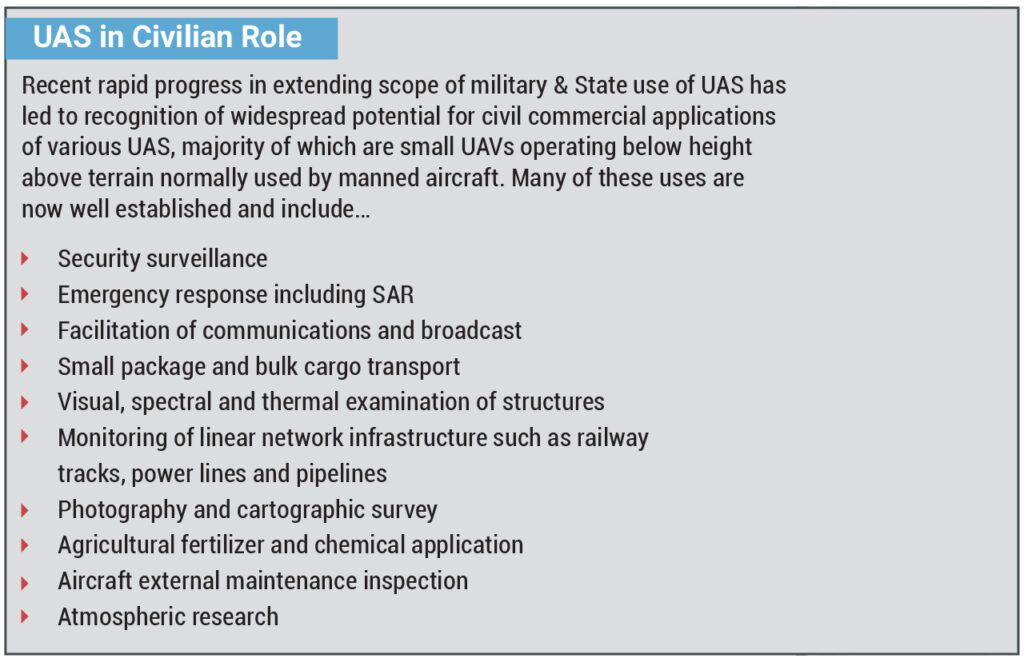
For example, Saudi Arabia announced it had reached a deal with China to build a military UAV factory in Saudi Arabia. While details are limited, it could be one of largest international drone deals to date. China is a major source of drones for countries in Africa and Middle East.
China claimed that China Aerospace Science and Technology Corporation is ready to start mass producing Cai Hong 5 (CH-5), country’s most advanced publicly acknowledged drone. They claim CH-5 is equal to MQ-9 Reaper in technology, although specifications indicate it has a weaker engine. It is said to be able to operate for 60 hours and fly at 30,000 ft.
Chinese government is rather tight lipped about how exactly it is using and plans to use AI for its military, but it has made clear it sees heavy investment AI as critical to country’s future and will be used to “maintain national security.” Chinese military seeks to capitalize on future of autonomous warfare and use its growing civilian AI development to help do so.
For example, earlier this year China Electronics Technology Group Corporation claimed to have launched a record-breaking intelligent drone swarm with 119 UAVs. They claim drones were flown with ad hoc networks and under autonomous group control, but they have provided no information on when or where this test took place.
Another significant player in this regard is Wing Loong II, a Medium Altitude Long Endurance (MALE) UCAV developed by Chengdu Aircraft Industry Group. Range of 4000 km, an endurance of 20 hours, a service ceiling of 16000 feet and maximum speed of 370 kph. This UCAV is an improved version of its predecessor Wing Loong 1. Current version has an optimized aerodynamic design, improved airframe and upgraded airborne systems which feature better capability in terms of flight, payload and information capacity. It is equipped with satellite communication (SATCOM) system. Its electro-optical payload pad fitted under forward section of fuselage is integrated with daylight and infrared cameras and sensors to collect surveillance and targeting data in both day and low-light/night conditions.
Concluding Thoughts on Military UAVs
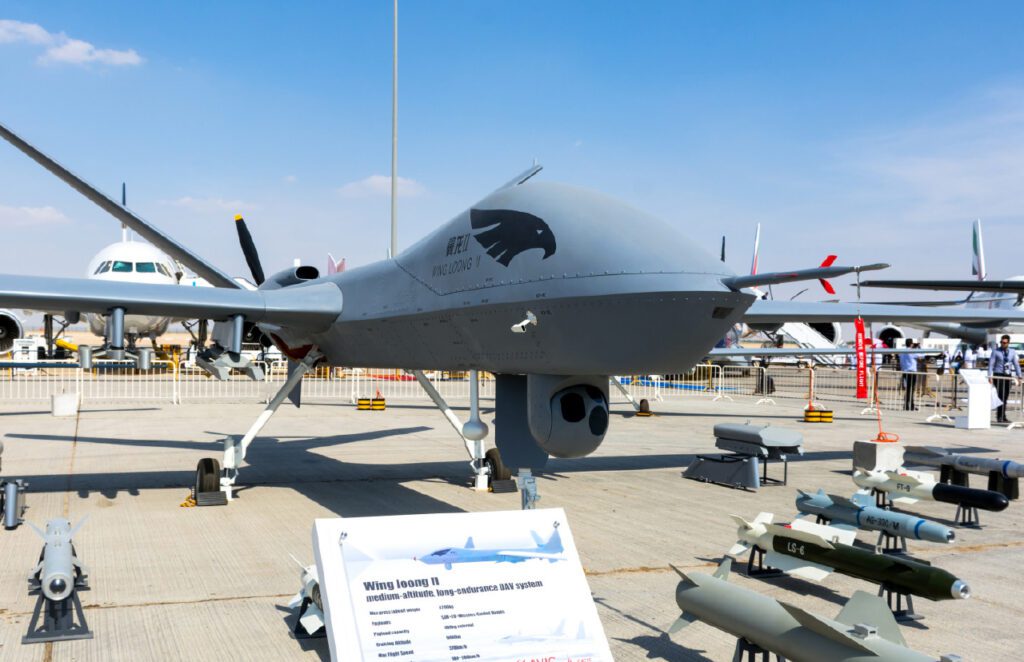
Major and minor militaries globally see UAVs as future of airpower. In 2015 United States Secretary of the Navy Ray Mabus said F-35 Joint Strike Fighter will likely be “the last manned strike fighter aircraft the Department of Navy will ever buy or fly,” and that autonomous unmanned vehicles will be the “new normal in ever-increasing areas.”
Drones already make up a large share of vehicles in operation in major militaries and percent of airpower and flight hours they make up in air forces is expected to grow significantly. As a result, market for drones is projected to increase several fold in coming decade with United States, Israel, and China playing a major role.
Generationext!
The third dimension has dominated the philosophical thought of military theorists since long. In came the air theorists with the tenets: control of air, centralized control – decentralized execution, priority, balance, concentration. Advances in the unmanned domain have forced the rules of the game to have been in a state of flux. Starting from Boeings loyal wingman concept of evolved AI (Artificial Intelligence) to United Kingdom’s BAE Taranis to developing UAV swarm technology, completely unmanned or autonomous aircraft are the inevitable future of the air. Counter-measures to cater for the technological evolution are being sought and have been developed as well. Leaving this subject for later discussion, what is coming next does not end in the air but space exploration. Where we have seen the Perseverance Rover in February this year land on Mars in Jezero Crater. Land Ahoy?!… Not yet!
